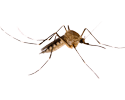FSMA and IPM: What It Means for Food Facilities
48 million Americans are affected each year by a foodborne illness, with over 3,000 of those cases resulting in death per the Centers for Disease Control. Back in 2011, it was realized that a food management policy overhaul was way overdue. Thankfully, the Food Safety Modernization Act (FSMA) sought to install stricter regulations and intensive protection systems in order to keep the US population a little safer. The systems in place now focus most on preventative measures, as opposed to raising the alarm at the first sign of an outbreak. Also, by providing the Food and Drug Administration with increased powers such as instituting a mandatory recall, the U.S. is in much better position to handle a foodborne illness.
As a food processing manager, “regulatory standards” is probably your least favorite phrase. Yet, with standards being outdated by 70 years, this reform is overdue. You have more than likely prepared your facility to match preparation standards, but have you considered implementing an integrated pest management (IPM) approach, in addition to your current program? Including IPM practices in the management of your plant is a much more proactive solution to agreeing with FSMA’s specifications. Today, we outline a few key areas to address in your plan and put you in the good graces of the FDA.
Action Thresholds
The premise behind obeying an IPM approach in your building is controlling rather than eliminating, only using chemicals in the most severe instances. A key technique in doing so is setting an “action threshold,” or the precise levels at which an insecticide intervention is necessary. Thus, your plant drastically reduces pesticide applications while also maintaining a pest level in accordance with FSMA.
In order to accomplish an IPM plan, pest documentation needs to be communicated to all working team members. Anyone working in the structure should have a copy. This should be an exhaustive list covering the pests most likely to infiltrate your building and the treatment most appropriate for the specific level of insects or rodents around your food products. Examples include: “Cockroaches – maximum of two before bait application; 10 or more discovered require every-other-day service from a pest management company,” “Mice – any sign of droppings or further evidence automatically triggers pest management company call,” and other similar instances.
Pre-Identification
Differing pest species breed in varying environments; some requiring damp and dark locations while others need warmth with easily accessible nourishment. To coordinate a more preventative approach to pest management, you’ll need to holistically examine your plant on a regular basis to identify areas of concern. Scheduling a review and training session with your pest management company will inevitably save you future hassle with handling a potential infestation. Having your crew members be completely knowledgeable of problematic areas around the machinery can only benefit your facility in the long run.
Additionally, documenting all conducive conditions and the places most likely to harbor certain pests, along with action items associated with the respective pest, can act as an ongoing training item for all employees.
FSMA Team
As a plant manager, it’s your duty to assemble a team that can enact FSMA’s standards with regards to pest management. Your primary responsibility should be to fully understand FSMA’s requirements and efficiently circulate the information among your team. Your communication plan should be seamless between the pest management company and those working intimately in the space where pests intrude. Standardizing this process will eventually create habits among participants, making sure nothing is lost in translation.
Additionally, you or an appointed employee will need to record thorough documentation on all pest management happenings: any chemical application applied and where it was used, pests spotted on a weekly basis, communication with pest management company, etc. Contact your pest control partner for more assistance in determining an accurate reporting schedule, as they can tailor a checklist that best suits your plant’s needs.
If you are searching for an experienced and knowledgeable IPM team, contact Holder’s Today.
FSMA and IPM: What It Means for Food Facilities Serving
Houston
Beaumont | Conroe | Spring | Pasadena | The Woodlands | Richmond | Galveston
Baytown | Bryan | Cleveland | College Station | Cypress | Pearland | Sugar Land
Home » FSMA and IPM: What It Means for Food Facilities



